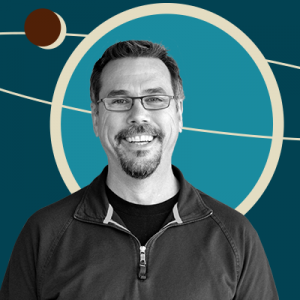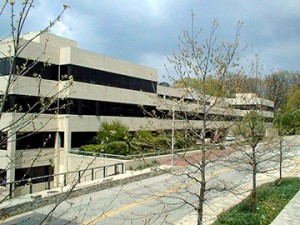As part of whetting your appetite for all things cosmic at SXSWi, I had the opportunity to talk with one of my former colleagues from the Space Telescope Science Institute (STSci). Without further ado below is the little chat I had with Tony Darnell.
As part of our full disclosure that we worked together, he gave me a quick plug for the work I did this past fall.
“If you’re following the @NASA Twitter account from January to April, all the tweets or most of the tweets that come from the account will be written by Carl.”
Darnell works in the Space Telescope Science Institute, a part of the Johns Hopkins University network. The STSci is a wonderful place full of astronomers and astrophysicists, going about their day to day, investigating the nature of the cosmos. As far as Hubble goes, STSci is second only to NASA.
“The Space Telescope Science Institute is a contractor with NASA,” Darnell said. “Our responsibility is the daily operations of the Hubble. Making sure the observations get made, general up-keep of the systems, and we get to decide who gets to use it with something called a time allocation committee.”
Space Telescope Science Institute
Darnell helps handle the social media for the institute and produces the weekly Hubble Hangouts. His love for the Hubble came from the Deep Field image Hubble took in the mid-1990s.
“I split my time between two jobs at the institute,” Darnell said. “I spent most of my career as a software engineer, writing software for astronomers to use and calibrate their data. But I have always had an interest with public outreach and had a hand in doing astronomy shows and my YouTube channel called Deep Astronomy. The institute saw this and now I do social media outreach.”
For NASA and STSci this is a special year. Right after SXSWi is Hubble’s deployment day or birthday as we humans might say.
“It been up there 25 years folks!” Darnell said. “That’s longer than any other mission. That’s thanks to the manned Shuttle; without it there is no way Hubble would have made it 25 years. It’s been fixed five times and every time it’s been made in to a new telescope.”
The relationship STSci and NASA’s Goddard Space Flight Center in Maryland have with the former Shuttle program runs deep due to the Hubble’s five servicing missions. There is a lot of love for the Shuttle and particularly the astronauts who risked their lives so we might know the universe better.
STSci has been attending SXSWi since another contractor, Northrop Grumman, built a full-scale model of the new James Webb Space Telescope, named for the NASA administrator who helped take humans to the moon and started NASA’s Science divisions.
“This will be our third year,” Darnell said. “Our first year we broke a Guinness Book of World Records for the largest outdoor astronomy lesson ever, a bit of an arcane record but we broke it.”
With the 25th anniversary of Hubble it’s all hands on deck for NASA and STSci to tout the most scientific prolific instrument ever built. All good things must come to an end, however, and in 2025, if nothing is done, Hubble’s orbit will begin to catastrophically decay, until it returns to earth to hit in the Pacific Ocean.
“I would like to see use keep pushing it out into space and eventually it would become some sort of orbiting national park,” Darnell said.
It would be great to save the Hubble with a fuel efficient ion booster, until space hotels get up and running.
STSci is focusing on getting the most out of Hubble and looking forward to it working with the JWST. Looking deeply in the infrared, JWST will show a more complete picture of the cosmos’s history than ever before.
“The real astronomy is in the infrared,” Darnell said. “The James Webb Space Telescope is going to be able to see the first galaxies ever to form and it will resolve individual exoplanets orbiting their stars.”
As Hubble looks into the future and turns 25, Darnell summed up the spirit of Hubble.
“If Hubble could talk he would say, ‘I am doing great, let me at it.’”
“Hubble has done more to show us our place in the universe than any other thing we have ever built,” Darnell concluded. “It’s an emotional connection when we see the distant stars, nebula, and galaxies it humbles use.”


